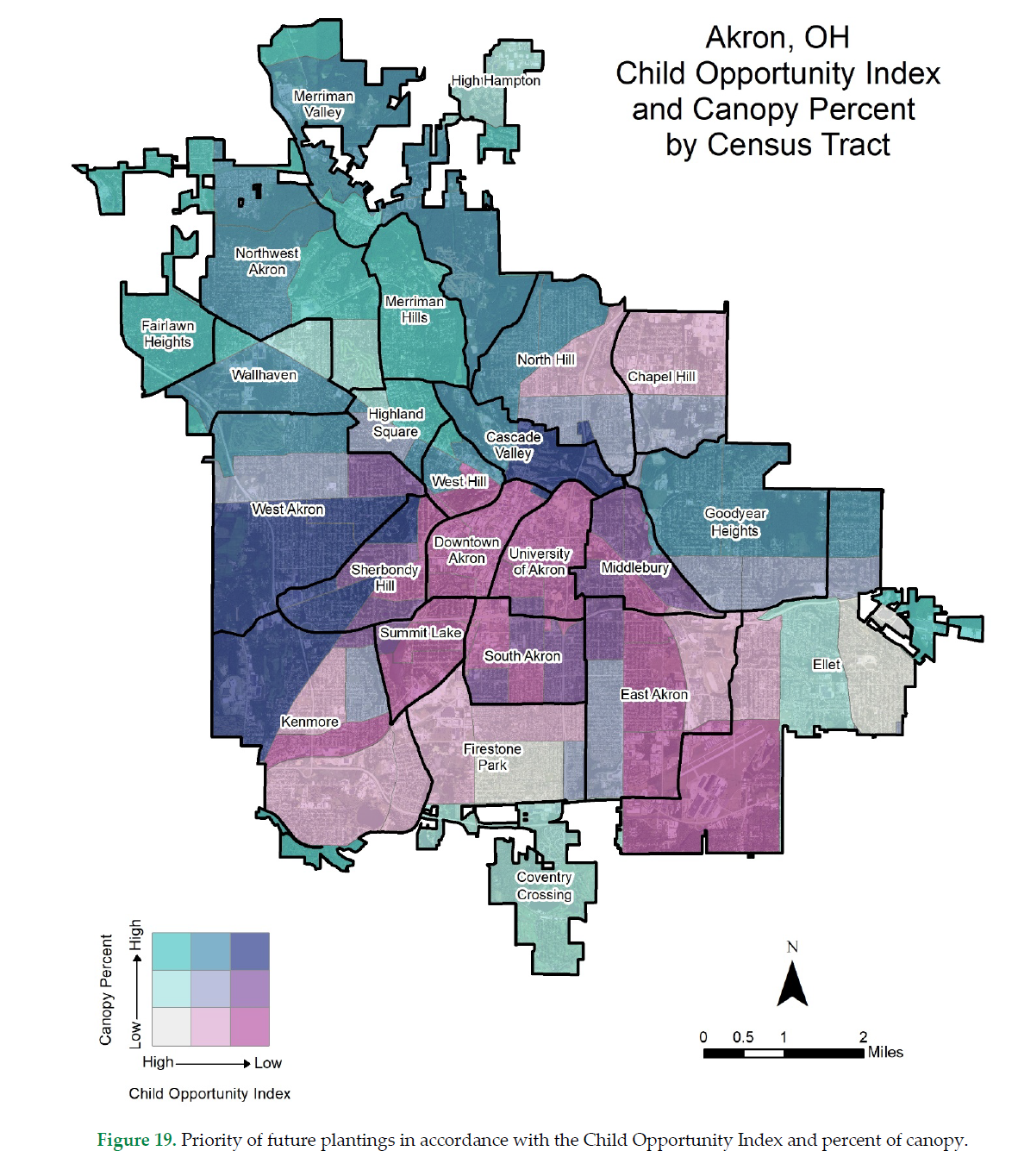Akron is the fifth largest city in Ohio, with a population of just under 200,000. For their 2020 State of Canopy Report, Akron city leaders focused on understanding inequities in the distribution of trees across the city. Trees are critical to health and wellbeing: they cool neighborhoods during hot weather, protecting residents from the harmful effects of excessive heat; trees help clean the air of pollution, helping to improve health and reduce respiratory illnesses like asthma; they absorb rainwater runoff and prevent flooding, a growing concern as the climate warms; and trees have even been shown to reduce gun violence and increase residents’ feelings of safety, belonging and wellbeing.
The firm that completed Akron’s Tree Canopy Report used data from the Child Opportunity Index and other sources to develop a priority plan of future tree plantings. The data showed that neighborhoods with the lowest opportunity also had the lowest distribution of trees. This means that residents who live in the lowest opportunity neighborhoods benefit the least from the benefits of trees.
The Tree Canopy Report creates a blueprint for the City of Akron to use in increasing tree equity by planting trees in neighborhoods that have the fewest trees and can benefit the most from increasing the tree canopy. Using the COI to understand inequities in the distribution of trees in the City of Akron allows city leaders to see patterns causes by decades of uneven investment and focus scares resources strategically and equitably moving forward.





